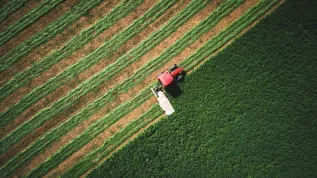
Intelligent textile shirt for measuring ECG, designed for patients in cardiac rehabilitation, has been developed by Łódź company Inovatica. The measurement results can be read on a smartphone or tablet, and thanks to Internet connection, doctors can continuously remotely monitor patients.
"It is a device for cardiac rehabilitation of patients, who should be constantly monitored" - told PAP the CEO of Inovatica, Bogumił Zięba.
ECG shirt is a project of the company Inovatica, carried out in cooperation with Lodz University of Technology and the Medical University of Lodz. According to Zięba, this interdisciplinary project fills the niche between medical Holter monitors that measure ECG, but are uncomfortable and not very functional, and the popular pulse watches.
The company has developed software for the entire system, while the contribution of specialists from Lodz University of Technology was textronics, combining a textile shirt with measuring sensors. Cardiologists from the Medical University of Lodz helped validate and verify the signals received from the measuring system.
The end result is a textile shirt with embedded intelligent mechanisms that measure ECG. "The project involved creating a measurement system that would be integrated with the shirt fabric in a way that allows the shirt to be washed, dried and, normally used. The difficulty lied in connecting the system with measuring electrodes, which is normally used in Holter monitors, with the shirt, which is a textile product"- Zięba told PAP.
The shirt uses Bluetooth to connect to mobile devices - smartphones and tablets. After connecting to the internet it presents ECG measurements in real time on mobile devices, and sends it to the doctors who remotely monitor patients.
"The difficulty lied in the fact that the received signal had to be filtered, de-noised, stabilized and sent to the mobile phone using a wireless, secure communication protocol using Bluetooth. Later, it was strictly engineering work that involved writing software for mobile device and server that sends and displays the data for doctors who remotely monitor patients" - he explained.
According to Zięba, this is an innovative solution in Poland; no similar products are commercially available at this time. "I know that similar work is carried out in different institutions. We are hoping for a commercial success of our product" - he added.
Inovatica deals with web applications, geolocation indoors and implementation of the Internet of Things (IoT). The company has already released the first licenses to customers interested in implementing this solution, forming part of the IoT.
According to Zięba, the Internet of Things is one of the main directions of technological development. "We can see this in the number of mobile devices that are on the market, growing number of users, and even a new generation of people who are +glued+ to their cell phones. Internet accessibility everywhere, miniaturization of electronic devices - it is a widespread opinion that the IoT is the direction of development Internet technologies" - he emphasised.
The project received 300 thousand zlotys EU funding under the measure III.3 "The development of R&D in enterprises" of the Regional Operational Programme of the Łódź province. It won the "Strong in Business" award in the category "Innovation with potential".
According to Zięba, EU funding, especially for research and development, is crucial for SMEs. "Small and medium-sized enterprises, the segment which I represent, find it very difficult to create own R&D department on a decent scale. Work on a smaller scale does not make sense, because the market is highly competitive and global, we have access to products from around the world. I believe that EU funding, especially for research and development, is are very important and crucial for SMEs"- emphasised Zięba. (PAP)
szu/ hgt/ luo/ itm/ nrt/
tr. RL













